Disclosure: This article contains affiliate links. We may earn a commission from purchases at no extra cost to you, which helps our travel content.
Standing atop the Manila Hotel's rooftop bar, watching the famous Manila Bay sunset paint the sky in impossible shades of orange and pink, I couldn't help but reflect on my journey with this misunderstood metropolis. Manila wasn't love at first sight for me – it's a complex, challenging city that reveals its charms gradually, like a shy friend who opens up only after several meetings. My first visit six years ago left me overwhelmed by the traffic, humidity, and seeming chaos. Yet something called me back, and with each return, I've peeled back another layer of this fascinating capital. Now on my fourth visit, I've finally cracked the code to experiencing Manila not as a bewildered tourist but as a comfortable temporary local. This winter week in Manila proved perfect – the dry season's comfortable temperatures and blue skies providing the ideal backdrop to explore everything from Spanish colonial treasures to cutting-edge cuisine and vibrant nightlife scenes that rival any global hotspot.
Getting Your Bearings: Manila's Distinctive Districts
Manila isn't so much a single city as a collection of distinctive neighborhoods, each with its own personality and appeal. Understanding this fundamental structure is your first step to navigating the metropolis like someone who belongs here.
The historic heart lies in Intramuros, the walled Spanish colonial city where cobblestone streets lead to imposing churches and well-preserved mansions. Here, history feels tangible as you walk past the stone fortifications that have stood since the 16th century. Just outside these walls, Rizal Park offers a green respite and houses the monument to the country's national hero, José Rizal.
For modern Manila, head to Makati – the sleek financial district where gleaming skyscrapers house multinational corporations and luxury hotels. Within Makati, the Ayala Triangle Gardens provides an unexpected oasis of calm, while Greenbelt and Glorietta malls offer world-class shopping experiences.
My personal favorite district is Poblacion, once Makati's red-light district, now transformed into the city's hippest neighborhood. Here, narrow streets house speakeasies, art galleries, and some of Manila's most innovative restaurants. The energy here reminds me of Brooklyn's evolution – authentic, creative, and slightly gritty in the best possible way.
Don't miss Bonifacio Global City (BGC) in Taguig – a master-planned area with wide sidewalks (a rarity in Manila!), public art installations, and a distinctly cosmopolitan vibe. The contrast between BGC's orderly streets and the organic chaos of older districts perfectly illustrates Manila's fascinating duality.
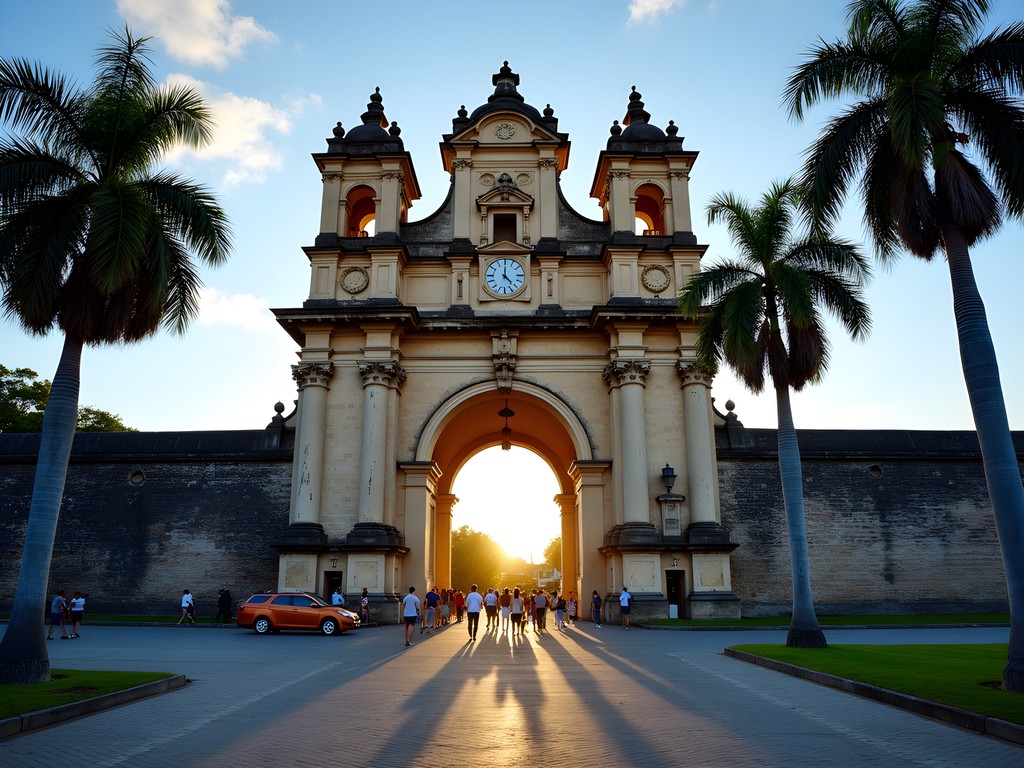
💡 Pro Tips
- Use Grab (Southeast Asia's Uber) to navigate between districts – it's affordable and eliminates haggling with taxis
- Purchase a reloadable Beep card for the MRT/LRT train systems to avoid queues
- Save offline Google Maps of each district you plan to visit – cellular service can be spotty
Cultural Immersion: Beyond the Tourist Traps
While guidebooks will direct you to Intramuros (which absolutely deserves your time), Manila offers cultural experiences that go far deeper than the standard tourist circuit.
One of my most memorable Manila experiences was joining a Carlos Celdran walking tour through Intramuros. Though Carlos himself sadly passed away in 2019, his legacy continues through guides trained in his theatrical, insightful style of storytelling that brings Filipino history to life. These tours blend humor, political commentary, and historical facts in a way that conventional museum visits simply can't match.
For art lovers, the National Museum of the Philippines complex is world-class and, remarkably, free to enter. The Natural History building is housed in a stunning neoclassical structure, while the collection spans everything from prehistoric Filipino artifacts to contemporary installations. I spent an entire afternoon mesmerized by Juan Luna's massive Spoliarium painting, which rivals European masterpieces in both scale and emotional impact.
To understand Manila's religious heritage (the Philippines is Asia's largest Catholic country), attend Sunday mass at San Agustin Church in Intramuros, a UNESCO World Heritage site with breathtaking baroque interiors. Even as someone with limited religious background, the experience of hearing hundreds of voices echoing through this 16th-century space was profoundly moving.
For cultural immersion of a different sort, visit Quiapo Church on a Friday, when devotees flock to touch the Black Nazarene statue. The surrounding market streets offer a sensory explosion of incense, street food, and fortune tellers – a fascinating blend of Catholic and pre-colonial spiritual practices.
Before my trip, I prepared by reading Filipino history book, which provided crucial context for understanding Manila's complex cultural landscape and colonial past.
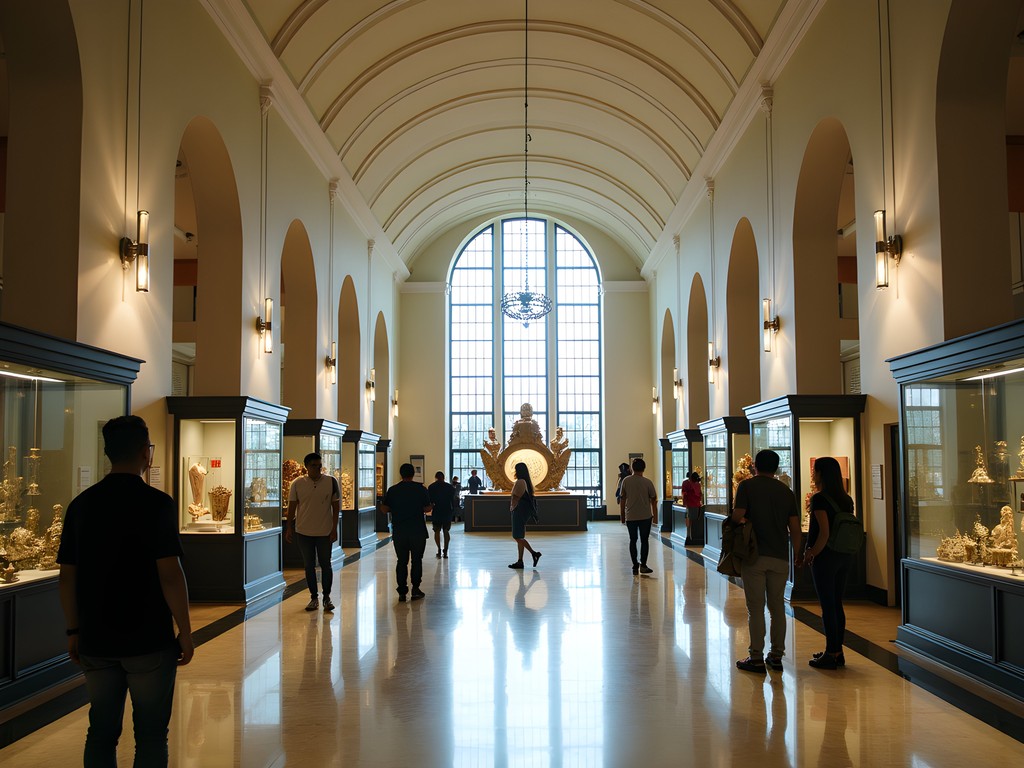
💡 Pro Tips
- Visit museums on weekdays to avoid crowds, especially the National Museum
- Dress modestly when visiting churches – shoulders covered and no shorts
- Learn a few basic Tagalog phrases like 'salamat' (thank you) and 'magkano' (how much) to connect with locals
Culinary Adventures: From Street Food to Fine Dining
Manila's food scene is criminally underrated in global culinary conversations. This city offers everything from humble street carts to innovative fine dining that rivals anything I've experienced in Tokyo or London.
Start your culinary exploration at Salcedo Saturday Market in Makati, where vendors from across the Philippines showcase regional specialties. This is where I first tried taho (silken tofu with caramel syrup), bibingka (coconut rice cake), and the infamous balut (fertilized duck egg) – though I'll admit I couldn't finish the latter! Come hungry and with an open mind.
For an elevated take on Filipino classics, Toyo Eatery in Makati is essential. Chef Jordy Navarra's tasting menu transforms humble local ingredients into sophisticated dishes that tell the story of Philippine culinary heritage. Their banana ketchup ice cream sounds bizarre but was a revelation – sweet, tangy, and unmistakably Filipino.
No Manila food journey is complete without experiencing a boodle fight – a traditional military-style meal where various dishes are spread across banana leaves and eaten with your hands. Blackbeard's Seafood Island offers an accessible version of this experience, with mountains of grilled seafood, vegetables, and rice creating an impressive feast.
For street food adventures, I recommend joining a guided tour with Bambike Ecotours, where you'll cycle through Intramuros while stopping to sample street snacks like fishballs, kwek-kwek (battered quail eggs), and halo-halo (a colorful shaved ice dessert). Their guides ensure you're sampling from the cleanest, safest vendors – an important consideration for first-timers.
To document these culinary discoveries, I brought my compact camera, which handles low light restaurant settings beautifully without being as intrusive as a full DSLR. The food photography I captured has become some of my most-liked social media content from any destination.
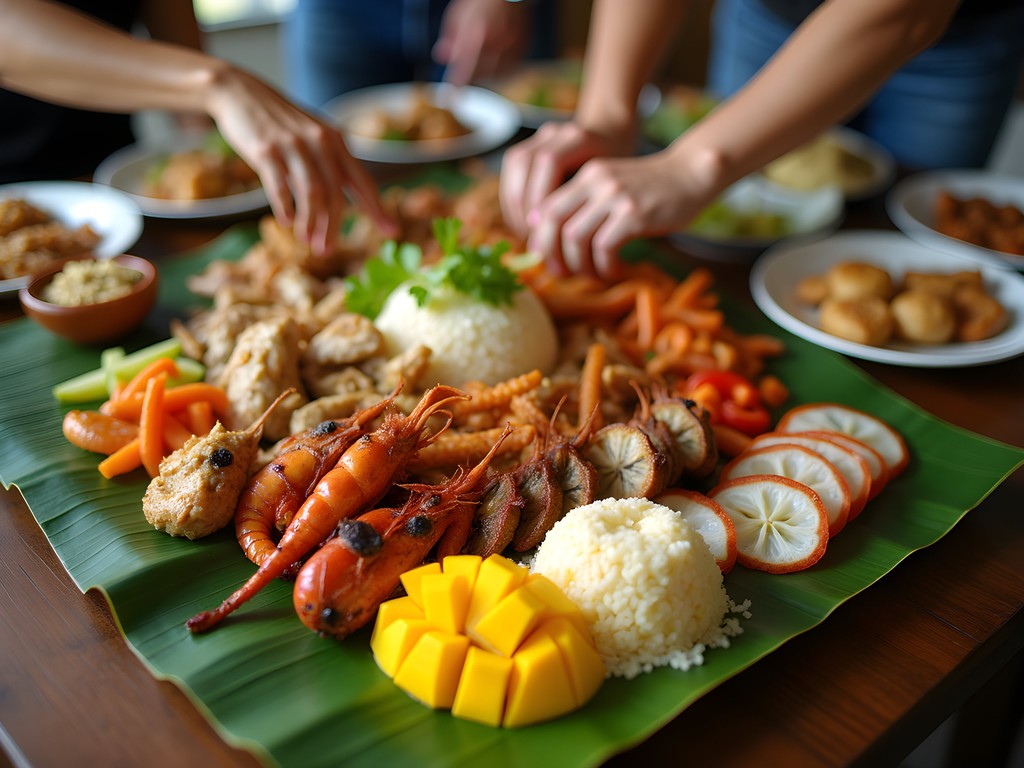
💡 Pro Tips
- Bring hand sanitizer for street food adventures
- Ask locals for their favorite carinderia (small family-run eateries) for the most authentic experience
- Try the local San Miguel beer or, for non-alcoholic options, fresh buko (coconut) juice served directly from the coconut
Urban Escapes: Finding Tranquility in the Chaos
Manila's reputation for traffic and density is well-earned, but the city also offers surprising pockets of tranquility where you can recharge between adventures.
My favorite urban oasis is Arroceros Forest Park, often called Manila's last lung. This 2.2-hectare sanctuary houses over 3,000 trees and plants, creating a microclimate that's noticeably cooler than the surrounding streets. Bring a book and spend an hour on one of the shaded benches listening to birdsong instead of car horns.
Paco Park offers another green retreat – this circular park was originally a cemetery during Spanish colonial times but has transformed into a peaceful garden with towering trees and moss-covered walls. I stumbled upon a string quartet practicing here one afternoon, creating a magical moment of serenity in the urban jungle.
For a different kind of escape, the National Museum of Natural History features a stunning glass dome called the Tree of Life, where you can sit in air-conditioned comfort surrounded by beautiful architecture. The building itself is a masterpiece of adaptive reuse, transforming a historic government building into a modern museum.
When the city's intensity becomes overwhelming, I retreat to The Peninsula Manila's lobby for their legendary afternoon tea. The soaring ceiling, live pianist, and impeccable service create an atmosphere of colonial-era elegance. Yes, it's splurgy by Manila standards, but sometimes worth the indulgence for a few hours of refined calm.
For those staying longer, consider a day trip to Tagaytay, just 90 minutes south of Manila (traffic permitting). The cooler climate and views of Taal Volcano provide a complete change of scenery. I pack my travel daypack with essentials for these escapes – it's compact enough not to be cumbersome in the city but has enough room for a water bottle, light jacket for air-conditioned spaces, and my camera gear.

💡 Pro Tips
- Visit parks early morning (6-8am) to see locals practicing tai chi and avoid midday heat
- Many malls offer prayer or meditation rooms that provide quiet spaces to decompress
- The Manila Hotel's lobby offers comfortable seating and free WiFi in a historic setting without requiring a purchase
Evening Entertainment: Manila After Dark
As the tropical sun sets, Manila transforms. The evening brings cooler temperatures and reveals a vibrant nightlife that caters to every taste, from sophisticated cocktail bars to pulsing dance clubs.
Start your evening with sunset drinks at The Bayleaf Hotel's Sky Deck View Bar in Intramuros. The panoramic views of Manila Bay's famous sunset provide a spectacular backdrop as the city lights begin to twinkle on. Their mango daiquiris perfectly complement the golden hour atmosphere.
For a taste of Manila's craft cocktail revolution, The Curator in Makati consistently ranks among Asia's 50 Best Bars. Hidden behind a coffee shop, this speakeasy serves meticulously crafted drinks using local ingredients like calamansi (Filipino lime) and Don Papa rum. The bartenders are true artists – tell them your preferences and let them create something bespoke.
Music lovers should head to 19 East in Sucat, where the Philippines' top musicians perform nightly. Filipino bands are legendary throughout Asia for their perfect covers and original compositions alike. I was blown away by the technical skill and soulful delivery – these musicians would be headlining major venues in any Western city.
For a uniquely Filipino evening, experience Bamboo Organ of Las Piñas if your visit coincides with one of their concerts. This 19th-century church organ made entirely of bamboo produces hauntingly beautiful music that resonates through the ancient stone church.
Nightlife in Poblacion deserves special mention. This neighborhood has transformed from red-light district to hipster haven, with concepts like Dulo, an art gallery by day and music venue by night. Nearby, Z Hostel's Roofdeck offers affordable drinks and a chance to meet both travelers and locals in a relaxed setting.
Staying safe while enjoying Manila's nightlife is essential. I always keep my valuables secure in a anti-theft crossbody bag with RFID protection and slash-resistant construction. It's discreet enough to look stylish but provides peace of mind in crowded venues.

💡 Pro Tips
- Use Grab for evening transportation rather than hailing street taxis
- Bring a light jacket or scarf as mall-based restaurants and bars can be aggressively air-conditioned
- Most venues have a 'smart casual' dress code – avoid shorts and flip-flops for evening outings
Shopping & Souvenirs: Beyond the Mega Malls
Manila's reputation as a city of massive shopping malls is well-deserved – complexes like SM Mall of Asia and Greenbelt are attractions in themselves. However, the most memorable shopping experiences come from venturing beyond these air-conditioned behemoths.
For uniquely Filipino souvenirs, Kultura (with branches in major malls) offers a curated selection of handicrafts from across the archipelago. Their collection of handwoven textiles from indigenous communities is particularly special – I found a beautiful table runner made by T'boli weavers using traditional ikat techniques.
Silahis Arts & Artifacts in Intramuros occupies a historic building and specializes in museum-quality Filipino crafts. Their selection of capiz shell decor, wood carvings from Paete (a town famous for master carvers), and contemporary Filipino art makes this my go-to for meaningful gifts.
Bargain hunters should brave the controlled chaos of Divisoria Market, where everything from fabrics to housewares is available at wholesale prices. Come with cash, comfortable shoes, and patience – the crowds can be intense but the deals are unbeatable. I found beautiful mother-of-pearl serving spoons for less than $5 that would cost ten times that at home.
For fashion with Filipino flair, visit Katutubo Pop-Up Market, a traveling marketplace (check their Instagram for current locations) showcasing young designers who incorporate traditional Filipino elements into contemporary designs. I treasure my barong-inspired linen shirt that works as well for summer events in Bristol as it did in Manila.
Legazpi Sunday Market in Makati combines food vendors with artisanal products, creating a pleasant browsing experience with plenty of refreshment options. The handmade soaps incorporating local ingredients like calamansi and coconut make perfect lightweight souvenirs.
To protect my purchases and manage the inevitable shopping haul, I always pack a foldable duffle bag in my luggage. It weighs almost nothing when empty but gives me flexible extra space for souvenirs on the return journey.
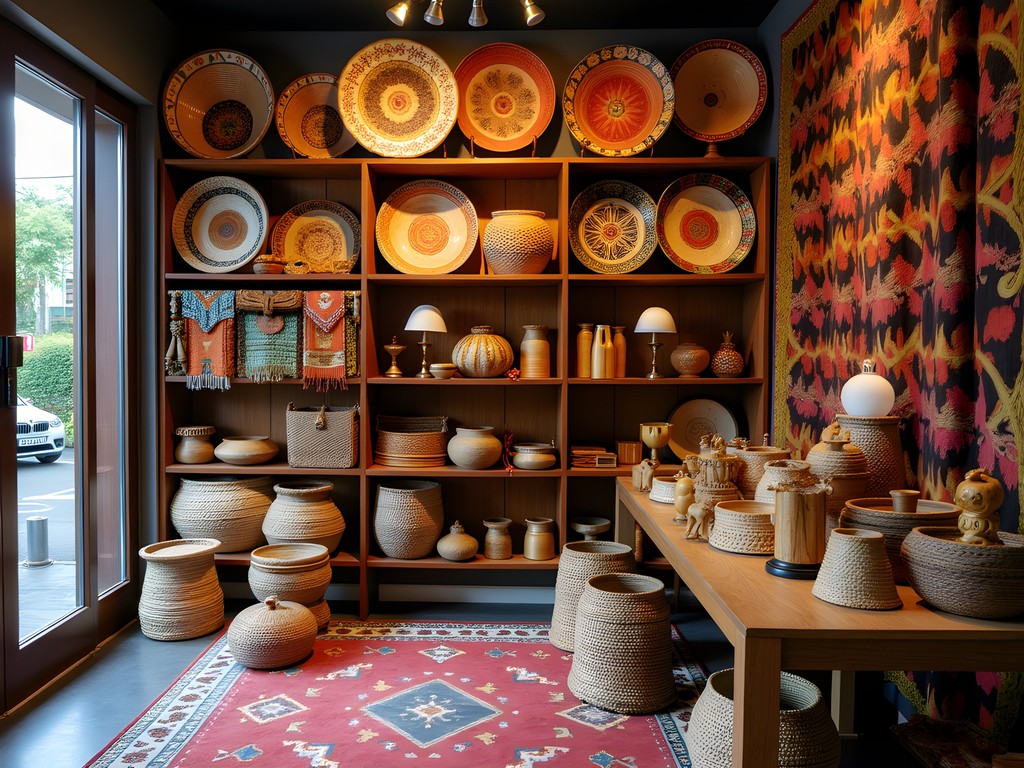
💡 Pro Tips
- Bargaining is expected in markets like Divisoria but not in established shops or malls
- Look for the 'Gawang Pilipino' (Made in the Philippines) label to ensure you're buying authentic local products
- Save room in your luggage for local snacks like dried mango, polvoron shortbread, and ube (purple yam) treats that make unique edible souvenirs
Final Thoughts
As my week in Manila draws to a close, I find myself already planning a return visit. This complex metropolis defies easy categorization – it's chaotic yet orderly, traditional yet forward-thinking, challenging yet deeply rewarding. The key to enjoying Manila lies in embracing its contradictions rather than fighting against them. Move with the rhythm of the city rather than imposing your own pace. Accept the invitation when a Filipino colleague offers to show you their favorite local spot. Say yes to that strange-looking street food that everyone's lining up for. Manila reveals its true character to those willing to look beyond the traffic and skyscrapers to find the beating heart underneath. Whether you're exploring centuries-old churches in Intramuros, discovering cutting-edge Filipino cuisine in Poblacion, or simply watching the legendary Manila Bay sunset paint the sky, this capital city offers experiences that will challenge your preconceptions and reward your curiosity. Manila isn't just a gateway to the Philippines' famous beaches – it's a destination worthy of your time and attention in its own right.
✨ Key Takeaways
- Manila is best experienced through its distinct neighborhoods, each with its own character
- Winter (December-February) offers ideal weather conditions with lower humidity and minimal rain
- The city's culinary scene ranges from world-class fine dining to unforgettable street food experiences
- Look beyond the mega-malls for authentic shopping and cultural experiences
📋 Practical Information
Best Time to Visit
December through February (dry season)
Budget Estimate
$50-100 per day excluding accommodation
Recommended Duration
5-7 days
Difficulty Level
Moderate
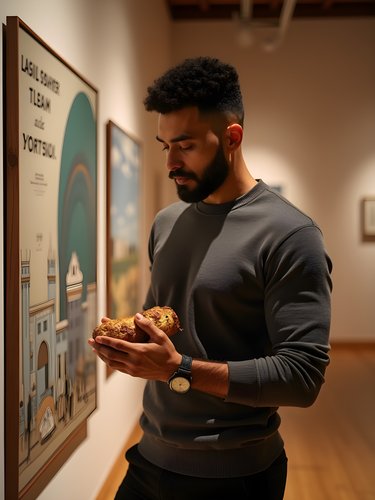
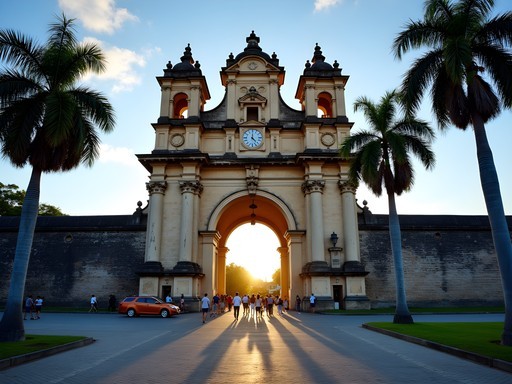
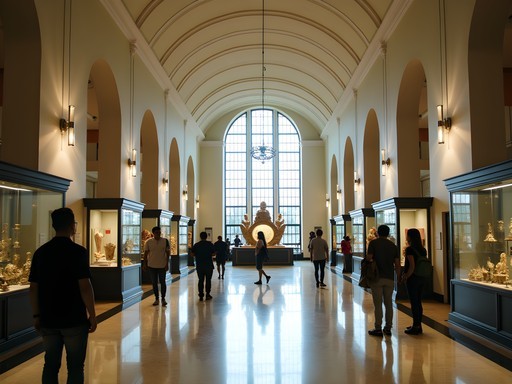

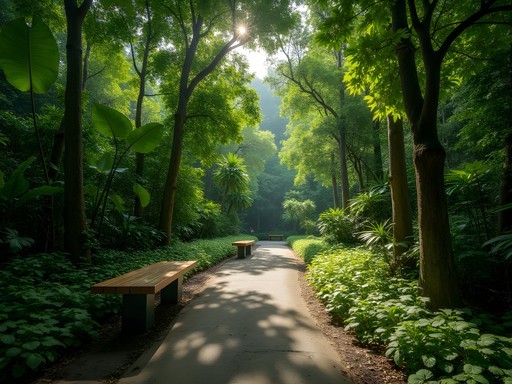

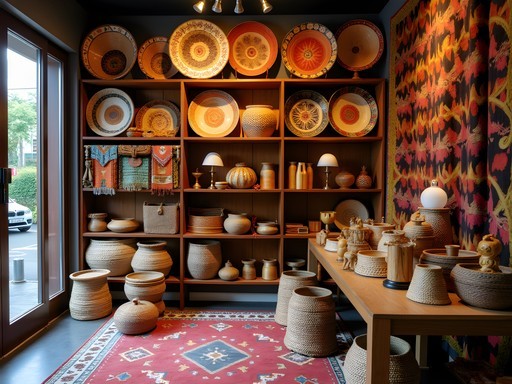



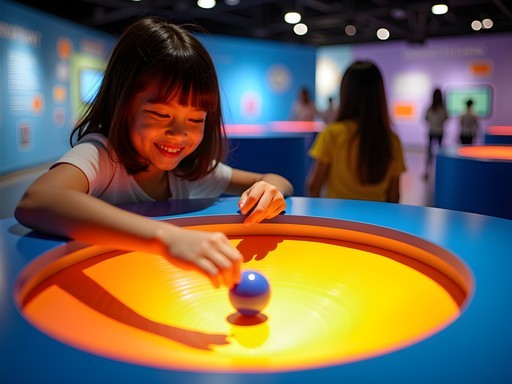


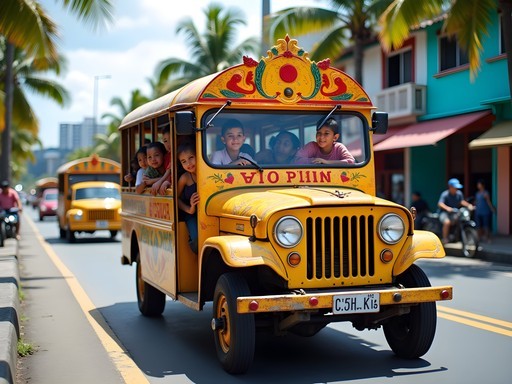
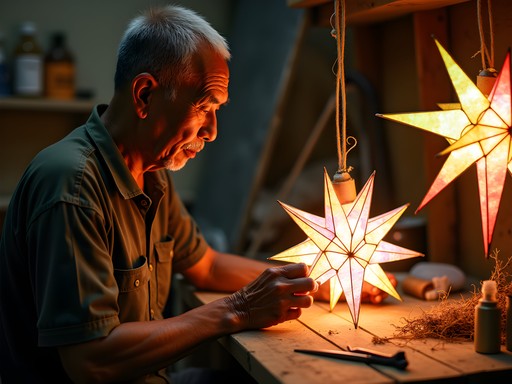
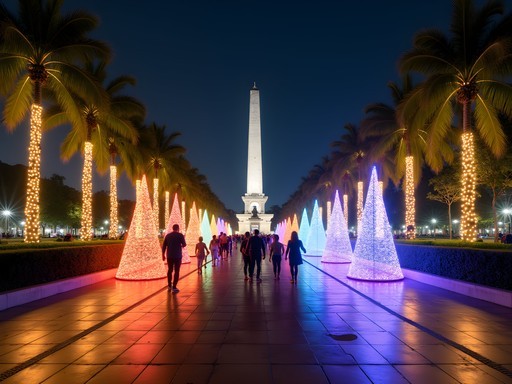
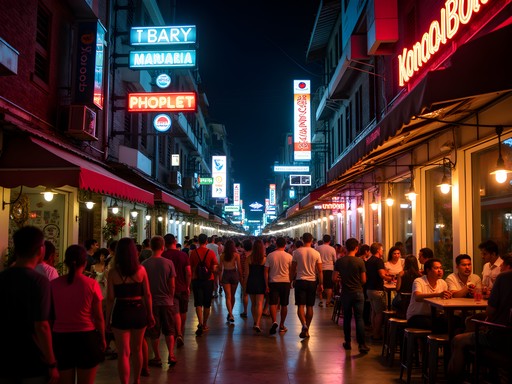
Comments
journeystar
Any recommendations for day trips from Manila? Is Tagaytay worth it?
nomadking
Tagaytay is 100% worth it! The view of Taal Volcano is stunning, and it's much cooler up there. Perfect escape from Manila's heat. Try bulalo soup while you're there!
Nicole Russell
Timothy, thank you for highlighting the complexity of Manila! I spent two weeks there solo last year and had such a mixed experience - parts were challenging but others were absolutely magical. For solo female travelers reading this: Manila is totally doable! I stayed in BGC which felt super safe even at night. The art scene there is INCREDIBLE - check out Pinto Art Museum in Antipolo if you can make a day trip. Also, the food scene blew me away - from the fancy restaurants in Makati to the street food in Quiapo. Fishball, isaw, and kwek-kwek from street vendors are must-tries if you're adventurous! One tip: the Grab app was my lifeline for getting around safely, especially at night. Worth every peso to avoid the taxi haggling!
journeystar
Did you feel safe walking around BGC at night alone? Planning my first solo trip!
Nicole Russell
Absolutely! BGC is like a different world - clean, well-lit, with security guards everywhere. I felt completely comfortable walking around even at 11pm. Start there if it's your first solo trip!
roamace2340
How safe is it to use the MRT/LRT during rush hour? Heard it gets super packed.
cooltime
It's safe but crazy crowded from 7-9am and 5-7pm. Try to travel outside those times if possible. Keep valuables in front pockets!
bluemate
Those Manila Bay sunsets are no joke! Best I've seen anywhere in Asia.
nomadking
YESSS to this guide! Manila gets such a bad rap but it's actually amazing once you know where to go! I spent a month there last year and fell in love with the city. The jeepneys are such a fun way to get around if you're feeling adventurous (just make sure you know your route). Also, don't miss the weekend Salcedo Market in Makati for incredible local food! For anyone worried about safety, just use the same common sense you would in any big city. I walked around with my anti-theft backpack and never had any issues. Timothy, did you get a chance to check out the speakeasies in Poblacion? Bank Bar hidden behind a 7-Eleven was my favorite find!
roamace2340
Poblacion nightlife is awesome! So many hidden gems there.
Casey Andersson
Timothy, your description of Manila's sunset from that rooftop bar took me right back to my visit last year! I stayed at the Sofitel Philippine Plaza and had similar sunset views that were absolutely magical. Manila really is a city of contrasts. I found Makati to be perfect for luxury shopping and dining (the Greenbelt malls are fantastic), while BGC gave me that ultra-modern vibe with amazing street art. For anyone visiting, I highly recommend taking a guided tour of Intramuros with Carlos Celdran's company - they bring the history to life in such an entertaining way. And don't miss the National Museum - it's world-class and surprisingly uncrowded!
journeystar
Is Sofitel worth the splurge? Trying to decide where to stay for our anniversary trip.
Casey Andersson
For a special occasion like an anniversary, absolutely! The pool area is gorgeous and the sunset views over Manila Bay are unbeatable. Request a bay-view room on a high floor!
happydiver
Great post! Going to Manila next month, so this is perfect timing!
cooltime
This guide brings back so many memories! I spent two weeks in Manila last year and definitely agree about Intramuros being a must-visit. The calesa ride through the cobblestone streets was like stepping back in time. One thing I'd add is to try the food tour in Binondo (Manila's Chinatown) - the lumpia and hopia pastries there are incredible. And definitely download Grab for getting around - Manila traffic is no joke!
bluemate
Binondo food tour was the highlight of my trip too! Did you try the soup dumplings at Dong Bei?
cooltime
Yes! Those soup dumplings were amazing. Also loved the fresh lumpia at New Po-Heng.
beachphotographer
OMG those sunset photos from Manila Bay are INCREDIBLE!!! 😍 Never considered Manila as a destination before but this post totally changed my mind! Adding it to my bucket list right now! Anyone know the best time of year to visit for good weather??
freeexplorer
January to May is definitely best - we went in February and had perfect weather. Avoid June-October unless you like epic rain!
beachphotographer
Thanks for the tip! Will definitely plan for February then! Can't wait to capture those sunsets!
Jean Wells
Timothy has captured Manila's essence admirably, though I would add some nuance regarding the city's historical layers. The juxtaposition of Spanish colonial architecture against the American-influenced city planning, overlaid with modern Asian urbanism, creates a fascinating palimpsest that rewards careful observation. For those visiting, I recommend exploring beyond the central districts to places like the University of the Philippines campus in Quezon City or the American Cemetery - both offering respite from urban density. The National Museum has also been significantly improved in recent years and warrants more attention than it receives from typical itineraries. Regarding safety concerns mentioned in other comments, Manila follows patterns common to many large Asian metropolises - exercise standard precautions but don't let exaggerated warnings prevent meaningful engagement with local communities.
Venture X
Premium card with 2X miles, $300 travel credit, Priority Pass